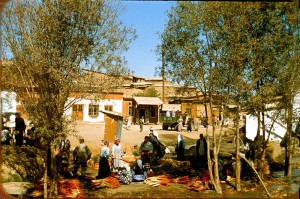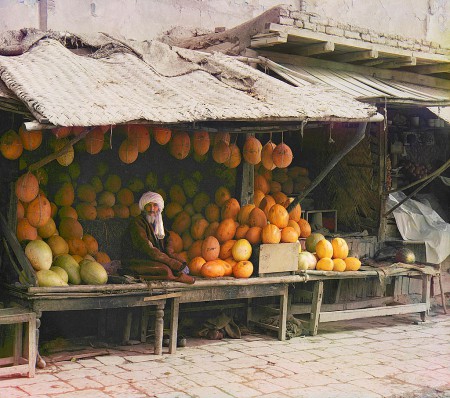- Biogeographic Information System Spatial Ecological Analysis of Megavertebrate Populations. Not agrobiodiversity by any stretch but stunning all the same, and a clarion call to our community to sort out Genebank Database Hell, surely.
- Traditional paddies as ecosystems. Great ones, too.
- Title says “seed banks susceptible to sham samples,” text says not really, and maybe it doesn’t matter much anyway. Our take from a few days ago.
- China’s millet useful in Africa. Which millet? Your guess is as good as mine.
- Cherimoya going seedless.
- Annex 1 list of International Treaty on PGRFA to expand? Well, maybe. Whatever, wow.
- Lecture materials on conservation and use of animal genetic resources.
- The ancient fast foods of Greece.
- Conserving heirloom apples. Nice gig if you can get it.
Nibbles: Mead, Treaty, Zoonoses, Flowery margins, Post-doc, Sacred Groves, Posters, Maize in Africa.
- Mead, part 4. You can find 1-3 yourselves.
- Plant genetic resources key to food security. The Jakarta Post gets it.
- Long, complex post from ILRI on zoonoses; diseases that infect people and animals.
- What are all the flowers for? The Provincial Agricultural Chamber of East Flanders seeks answers. h/t PAR.
- Wanna do a post-doc on Comprehensive modelling of agro-biodiversity in relation to seed exchange networks?
- Sacred groves threatened, by Times of India.
- Fabulous botanical posters, many featuring useful species, and all useful information. Of course tomatoes are fruits.
- I meant to write in detail about how Untapped crop data from Africa predicts corn peril if temperatures rise, but you know, life intervened.
Central Asian melons
Jeremy had one look at the map in the previous post and asked me whether it was possible that watermelon cultivation had collapsed in the Central Asia republics. Well, it has probably declined substantially, but clearly not entirely, as the photograph above suggests. You can read at length about the melons of Uzbekistan. And you can see below how things used to be, at least for other kinds of melons. Yes, old pictures of agrobiodiversity markets again.
Nibbles: Micronutrients, Population, Opium, Nixtamalization, Chocolate, Seed swap, Dog domestication, Meeting, Biofuel failure, Mesquite
- “Organic management practices appear to result in elevated levels of grain micronutrient concentration.” By no means the whole story.
- Tom too takes The Economist to task.
- Afghanistan’s opium growers. Damned if you do, damned if you don’t.
- Nixtamalization for the rest of us. More than you could ever want to know. Rye tortillas!
- Chocolate began with leftover beer? Seems unlikely.
- Take the fight to the monster’s lair. Swap seeds in Brussels. h/t Patrick.
- Dogs or dholes? Yeah I didn’t know what they were either.
- There was a workshop on “Seed System and Climate Change” in Bhutan a month ago.
- Big biofuel project in Tanzania bites the dust. And the land they “leased,” what happened to that?
- Ancient grinding holes. Might mesquite be another edible never domesticated?
Historical agrobiodiversity photographs online
 I’m not sure why I like old photographs of markets so much, but one reason may be because at the back of my mind is the thought that maybe photos such as the one from Uzbekistan in the 1950s at left and similar ones from 1920s Egypt could be used to gauge genetic erosion. Too bad the metadata for the stock imagery at National Geographic (where the Egypt photographs came from) doesn’t include date. Anyway, speaking of agrobiodiversity photographs from Egypt, the wonderful Saudi Aramco World also has some in its latest issue.
I’m not sure why I like old photographs of markets so much, but one reason may be because at the back of my mind is the thought that maybe photos such as the one from Uzbekistan in the 1950s at left and similar ones from 1920s Egypt could be used to gauge genetic erosion. Too bad the metadata for the stock imagery at National Geographic (where the Egypt photographs came from) doesn’t include date. Anyway, speaking of agrobiodiversity photographs from Egypt, the wonderful Saudi Aramco World also has some in its latest issue.

